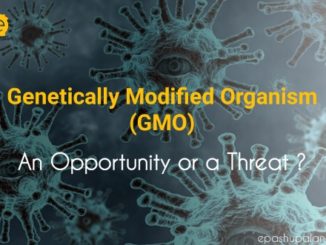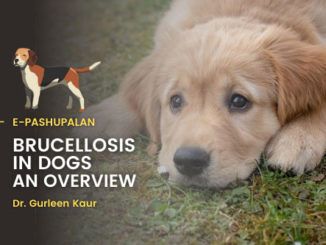Many household products meant for specific applications are the common indoor toxicants posing threat to pets. Household products are formulations of complex chemical mixtures with multiple active ingredients. Although many products are not highly toxic, cleaning substances, disinfectants, cosmetics, personal care products and some of the commonly used over the counter drugs are common sources of toxicological exposure particularly to pets.

The common route of exposure of the household hazardous compounds to an animal may be dermal, oral, ocular or inhalation. When an animal exposed to a high concentration of household product resulting in abnormal clinical signs is presented to the clinic, essential information to obtain from the owner includes full trade name of the product, ingredients listed on the product label and their concentration, the exposure amount and the duration of exposure, the progression of clinical signs in relation to the time of exposure and any treatment or first aid given by the owner before presenting to the vet. Owner may also be advised to bring the product container as sample of the suspected agents whenever possible, for easier identification of the chemical ingredient.
SOAPS AND DETERGENTS
Hand soaps, shampoos, spray cleaners, dish washing liquids, powders, laundry products, disinfectants, fabric softeners and sanitizers are the common products under this category.
Soaps: Bath soaps and bar soaps usually have low toxic potential and cause mild gastroenteritis with vomition, on ingestion.
Detergents: are surfactants: agents that lower the surface tension of the water to enable it to wet surfaces moré efficiently.
- They mainly contain inorganic ingredients such as phosphates, silicates or carbonates. Based on their degree of ionization, when in solution they have been classified in to non-ionic, cat-ionic and anionic detergents.
- Non-ionic detergents generally have low order of irritation and low toxicity, being non corrosive. .
- Based on their degree of ionization, when in solution they have been classified in to non-ionic, cat-ionic and anionic detergents.
- Anionic and cat-ionic detergents are corrosive and highly toxic.
- Non-ionic detergents (alkyl ethoxylate, alkyl phenoxylate, poly ethoxyethanols; sources: shampoos, dishwash detergents, laundry detergents) generally have low order of irritation and toxicity, being non corrosive.
- Anionic (alkylsodium sulfate, alkyl sodium sulfonate, dioctyl sodium sulfosuccinate, sodium lauryl sulfate; sources: shampoos, dish wash detergents, laundry detergents) and cat-ionic (benzethenium chloride, benzalkonium chloride, alkyl dimethyl zene,cetirimide, cetyl pyridinium chloride; sources: fabric softeners, germicides, disinfectants, sanitizers) detergents (Quaternary ammonium compounds) are corrosive and highly toxic.
- Ethanol and isopropanol, which are often found in cat ionic detergent preparations significantly enhance gastrointestinal absorption and damaged skin favours per-cutaneous absorption.
Shampoos: Selenium sulfide shampoos have low toxic potential, while, Zinc based (zinc pyridinethione) anti-dandruff shampoos are more toxic, resulting in gastroenteritis..
CORROSIVES
Corrosive products are either acidic or alkaline agents depending on their pH in solution.. Strongly alkaline or basic compounds tend to produce more severe injury than acidic materials; because contact with acids induces immediate intense acidic burns and pain, and most of the animals do not ingest significant quantities.
- Acidic corrosive (Hydrochloric acid, sulfuric acid, nitric acid, phosphoric acid, sodium bisulfite) product examples are anti rust compounds, toilet bowl cleaners, automobile batteries, gun barrel cleaning fluid and swimming pool cleaning agents.
- Alkaline (sodium hydroxide, potassium hydroxide, sodium carbonate, potassium carbonate, ammonium hydroxide, potassium permanganate) product examples are drain cleaners, washing products, liquid cleansers and toilet bowl products.
DISINFECTANTS
Disinfectants found in cleaning products include quaternary ammonium compounds, phenol, pine oil, bleaches, and alcohols; are more toxic than soaps and detergent compounds
- Phenols: are aromatic alcohols derived from coal tar, highly reactive and corrosive contact poisons; denatures and precipitates cellular proteins of all contacting cells. They are rapidly absorbed through ingestion, inhalation or skin. Cats are highly sensitive to phenolic compounds. Sources of phenolic compounds include flooring materials, coal tar, creosote, tar paper.
- Bleaches: Most household bleach preparations contain sodium hypochlorite. Calcium hyppochlorite and trichloroisocyanuric acid are present in industrial strength bleaching solutions, swimming pool chlorine products and chlorine laundry bleaches.
- Non chlorine bleach preparations or colorfast bleaches contain sodium peroxide, sodium perborate or enzymatic detergents.
- Chlorine bleaches are hazardous when mixed with strong acids or ammonia solutions as they release chlorine and chloramine gas respectively, which are severe respiratory and eye irritants.
- Generally, the toxicity of bleaches is of lower degree, resulting in irritation of oropharynx, salivation, vomition and abdominal pain.
- Nonchlorine bleach products, (sodium perborate, sodium peroxide) are alkaline and severe gastric irritatants causing renal damage
- Pine oils and turpentines: Pine oils are mixture of terpene alcohols derived from pine wood distillation. Turpentine is derived from pine oil, and is used as paint thinner. Pine oil based compounds may contain small amount of phenol derivatives. Cats are most susceptible to these agents.
- Boric acid: is the active ingredient in many ant and roach killers., ingestion may result in vomition
- Deodorants: They are composed of aluminum chloride and aluminum chlorohydrate; which have moderate toxicity potential
SOLVENTS AND ALCOHOLS
- Acetone: Product sources: nail polish remover, varnishes, glues. Though relatively low in toxicity , it can be absorbed orally, inhalation or by dermal application.
- Alcohols: The most commonly encountered alcohols include isopropanol, methanol and alcohol. Sources of alcohols include perfumes, cologne, grooming products (isopropanol), antifreeze products, automotive wind shield cleanser, consumer products (methanol) and alcoholic beverages, cosmetics, mouthwashes ,common baker’s and brewer’s yeast (ethanol).
- Ethylene glycol: Sources: Automobile radiator antifreeze, heat exchange fluids, photographic developing solutions. Clinical signs: CNS depression, ataxia, renal failure signs, vomition, crystalluria, hypothermia.
- Petroleum distillates: The compounds include cyclohexane, alkanes and alkenes. Sources: gasoline (petrol), kerosene, motor fuels, solvent paints and vehicles for pesticides. Because of low surface tension, chance of aspiration is most common. Dermal exposure may result in dermatitis.
METALS
- Lead, the major source of toxicity among the metals, The sources being : paints, batteries, solder, plumbing supplies, lubricating material, ceramic containers, Pb pipes, toys, inks, dyes, used oil from vehicles that burn leaded gasoline.
- Zinc (zinc oxide) present in food and beverages stored in galvanized containers, diapers, rubber products, cosmetics, sunscreen lotions,batteries, electrical equipment, textiles, pennies and transportation crates
BATTERIES
- Automotive or dry cell batteries contain sulfuric acid, that can be irritating on contact with eyes, skin and gastrointestinal tract.
- The sources of small disc/button batteries include batteries used in calculators, cameras, hearing aids, watches , the content being mainly mercuric oxide.
- The dry cell batteries , commonly used in toy flash lights, may contain the alkaline ( NaOH, KOH; alkaline batteries) or acidic compounds (ammonium chloride, manganese dioxide, heavy metals- Li, Ni, Zn, Ag, Cd) in them.
MATCHES, FIREWORKS AND MOTHBALLS
- Matches contain 40-60% potassium chlorate in match heads, are generally non toxic . It is an oxidizing agent and can cause methaemoglobinemia. The signs are manifested with ingestion of about 20 matches.
- Mothballs contain naphthalene and para-di-chlorobenzene, which have high toxic potential.
- Fireworks are relatively harmless if swallowed. Fireworks contain oxidizing agents (nitrates and chlorates: potassium nitrate, potassium chloride,sodium nitrite, potassium perchlorate, sulfur, various hydrocarbons) and metals(mercury, copper, strontium, barium, phosporous)
COMMON MEDICATIONS AND CHEMICALS
Common household drug used by the respective members in the home could accidentally become toxic upon ingestion by the pet or inadvertent administration of medicine meant for human use to pets in certain circumstances.
Majority of these drugs include
- cough and cold medications, caffeine rich medications/ soft drinks/ coffee/chocolates, cola/soft drinks, pain killers asthma and cold medications, bronchodilators, antiasthma.inhalers, nebulisers powder sprays
- Antihypertensives, antianxiety, Antideppressants and other psychotic drugs: Amitryptilline, nortryptilline, protriptylline, imipramine, clomopramine, trimipramine and desipramine are commonly prescribed human psychotherapeutic tricyclic antidepressant (TCA) medications.
- Aspirin, ibuprofen and paracetamol are the most common household drugs, with cats being extremely sensitive to their toxicity.
- Oral contraceptives: They contain estrogens can be toxic to pet resulting in irreversible aplastic anaemia, leucopenia and thrombocytopenia.
- Xylitol, a sweetener used in sugar free products, chewing gum being the most common source. It induces hypoglycemia by stimulating insulin secretion, resulting in weakness, ataxia, seizures and collapse.
- Benzoyl peroxide is the active ingredient in many anti acne preparations. Exposure results in hydrogen peroxide production, gastroenteritis
- Vitamin A, vitamin D and iron are of toxicological significance with accidental exposure or over dosage. Multivitamin medications are the main sources of vitamin D and vitamin A. Gestational supplements, multivitamins and lawn fertilizers are the sources of Iron and iron salts.
- Rodenticides- Warfarin, coumateryl,bromadiolone, bromethaline,diphenadione and brodifacoum Cholecalciferol , Phosphorous or Zinc phosphide could be the chemical ingredient sinteh commercial formulations of baits, pastes,liquids etc.
- Anti fly medications, anti flea preparation/ products such as powders, sprays, , mosquito killers/ repellants. cockroach / pest killer formulations may contain any one of the chemicals such as amitraz, pyrethins, pyrethroid (cpermethrin, deltamethrin, flumathrin etc), Organophosphates ( malathion, dichlorovos monocrotophos) and carbamates (carbaryl propoxur etc.)
- Household kitchen items which are toxic to pets include onion, garlic, chives, grapes and mushroom
References
Evans R.J (1996). Toxic hazards to cats. In Vet. Clin. North .Am. (Small Anim. Pract.): pp 251- 259
Gupta.P.K and Salunkhe.D.K(1988).Modern toxicology Vol: III, Immuno and Clinical toxicology. Metropolitan books,,NewDelhi. Pp 265-328.
Jane.G.Owens and David.C. Dorman. (1997). Common household hazards for small animlas. Veterinary Medicine, Feb : pp 140-148.
Jane.G.Owens and David.C. Dorman. (1997). Drug poisononig in small animals. Veterinary Medicine, Feb : pp 149-157.
Kore.A.M.(1990). Toxicology of nonsteroidal anti-inflammatory drugs. Vet. Clin. North Am. (Small Anim. Pract) 20(2): 419-430.
Kore.A.M (1997). Over the counter analgesic drug toxicoses in small animals. Veterinary Medicine, Feb : pp 158-165.
Lorgue .G ,Lechenet J and Riviere .A (1996). Clinical veterinary toxicology .Blackwell science publishers, UK.
Michael E. Peterson and Patricia A. Talcott.(2006). Small animal toxicology, second edition, . Elsevier saunders Inc, USA.pp 223-344.
Myra.L.Clarke, Harvey,PG and Humphrey, D.J. (1981). Organic Compounds : Miscellaneous. In Veterinary Toxicology . ELBS and Baillierre Tindall. Pp 169-187






Be the first to comment